Unless you have been living in a cave, you have noticed that Detroit has been all over the press lately in regards to the impressive urban revitalization that has taken place in its core, the innovative planning that has been done in the Detroit Future City process, and the opportunities and challenges that still lie ahead for Detroit that are different than any other city in the country. I am always excited to explore and learn about a new city, but one of my focused interests for Detroit was to begin to consider the role that Missing Middle Housing has played in the historic development of Detroit’s neighborhoods.
Even more importantly, I wanted to begin to consider what role these housing types have already played in the revitalization of existing neighborhoods, like Midtown, what role they will play in the next neighborhoods likely to revitalize, and what role they have in neighborhoods that are stuck in a state of disinvestment and struggling to even exist. One trip is not enough to answer all of these questions, and one blog post is not enough to present any solid conclusions, but several hundred photos and many foot, bicycle, and car miles later I was able to establish a good foundational knowledge for my inquiry. I was also fortunate to get an excellent local’s tour from Mark Nickita, a local architect and urbanist who is also an co-owner of several great downtown businesses including Pure Detroit and Rowland Cafe, who has played an instrumental role in enabling Detroit to rediscover its true urban self. This is my initial prognosis.
It may not come as a surprise, but a majority of Detroit’s neighborhoods have a wealth of Missing Middle Housing types dispersed throughout them in various states of repair. Even in neighborhoods that are mostly derelict you can still often find clusters of Missing Middle Housing types that have survived and are being well cared for. It is the neighborhoods closest to downtown, with a good stock of beautiful, brick Missing Middle Housing and with neighborhood-serving commercial amenities in place within walking distance, that have seen the largest increase in new residents, new businesses, and value.
Midtown
The value of Missing Middle Housing in walkable urban neighborhoods is most evident in Detroit’s Midtown neighborhood, which has seen an explosion of new growth and development in recent years. Midtown had some Missing Middle Housing types, most of which fit into our Upper Missing Middle Housing classification. The primary differences between Upper Missing Middle Types (UMM) compared to Missing Middle (MM) types are:
- UMM types have 3-4 stories instead of 2-2 ½ (they are bigger than house scale);
- UMM types are deeper, taking most of the depth of the lot from front to back. That being said, these types still retain a fairly narrow profile, typically no more than 60-70’ long, street-facing width without at least providing a major setback.
The UMM types typically are located on lots that provide transitions from corridors to the inner blocks of neighborhoods and along primary and secondary corridors. It is less common, but not impossible, to find these UMM types sprinkled throughout a primarily single-family neighborhood. The Midtown neighborhood was blessed with an amazing stock of historic UMM and MM types that clearly assisted in the revitalization of this neighborhood, because the economics are not (yet) in place to construct new buildings like these and provide them for anywhere near the current sales or rental prices.
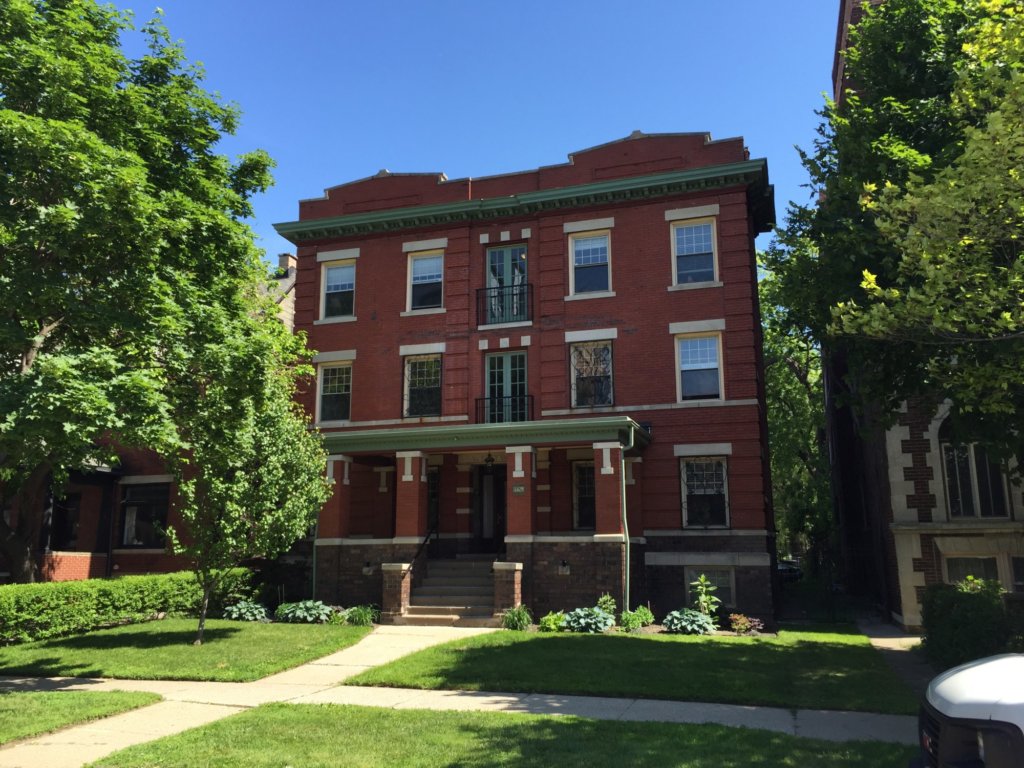
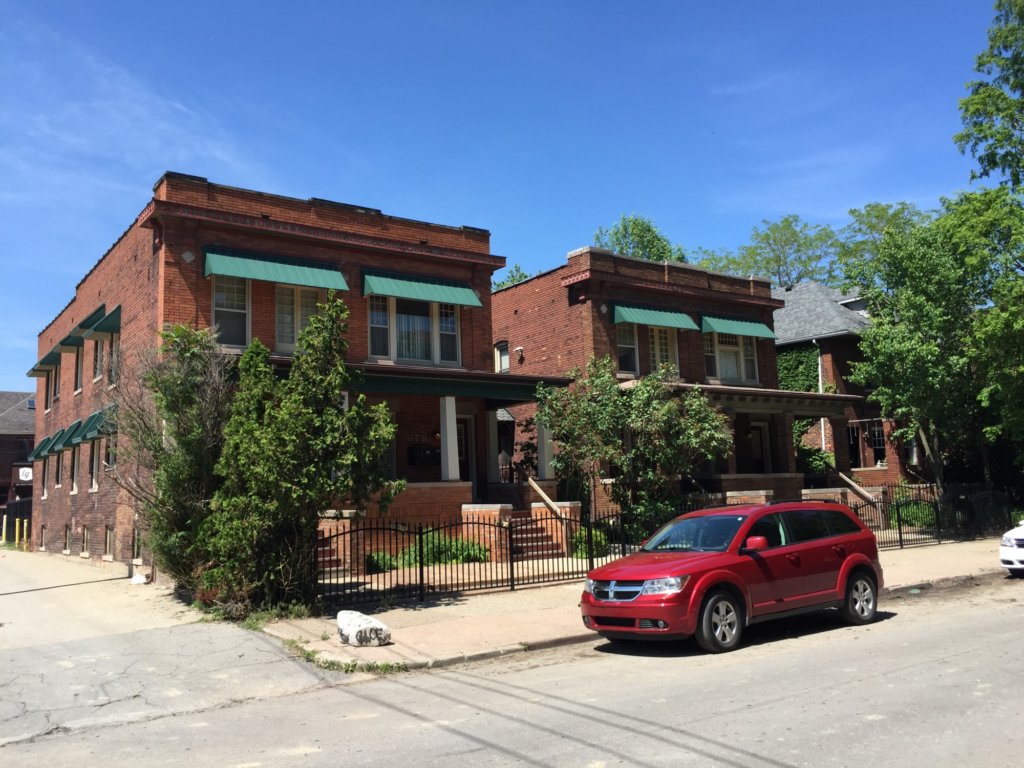
Woodbridge
Just west of Highway 10 from Midtown, I found a cluster of MM types in a neighborhood called Woodbridge, particularly focused on Commonwealth Street between Alexandria and Forest. This 3-5 blocks of solid mixed-housing is an oasis of MM housing types within a larger neighborhood that is very fragmented and becomes quite desolate, particularly as you go a few blocks to the west and approach and cross Grand River Avenue. As Midtown and Downtown continue to becomes more expensive, neighborhoods like this which still have good proximity to Downtown and Midtown will likely be the options for the market seeking urban living in Detroit. As more people arrive, the neighborhood amenities will likely follow, improving the walkability of these neighborhoods.
Header image: A collection of beautiful, brick, early 20th century Missing Middle Housing types in the Woodbridge neighborhood of Detroit.
Mexicantown
Several miles west of downtown is the neighborhood called Mexicantown. This neighborhood changes in character from the more urban neighborhoods and is composed of mostly smaller-lot single-family detached housing. There is still a nice range of MM housing types, however, in particular near the neighborhood-serving commercial corridors. One particular aspect I noticed in this neighborhood was how the end grain (short end) of the blocks were used to integrate MM types on blocks that were composed of single-family detached houses. As shown in the picture below, some of these types became a string of row houses. Even though they were much longer than a single-family detached house, the orientation of this lone façade toward the side street and a house-scale width of façade toward the single-family residential street made it compatible with even the adjacent homes. For those planners out there, very few of these end-grain types provided off-street parking and many had 80-90% lot coverage.
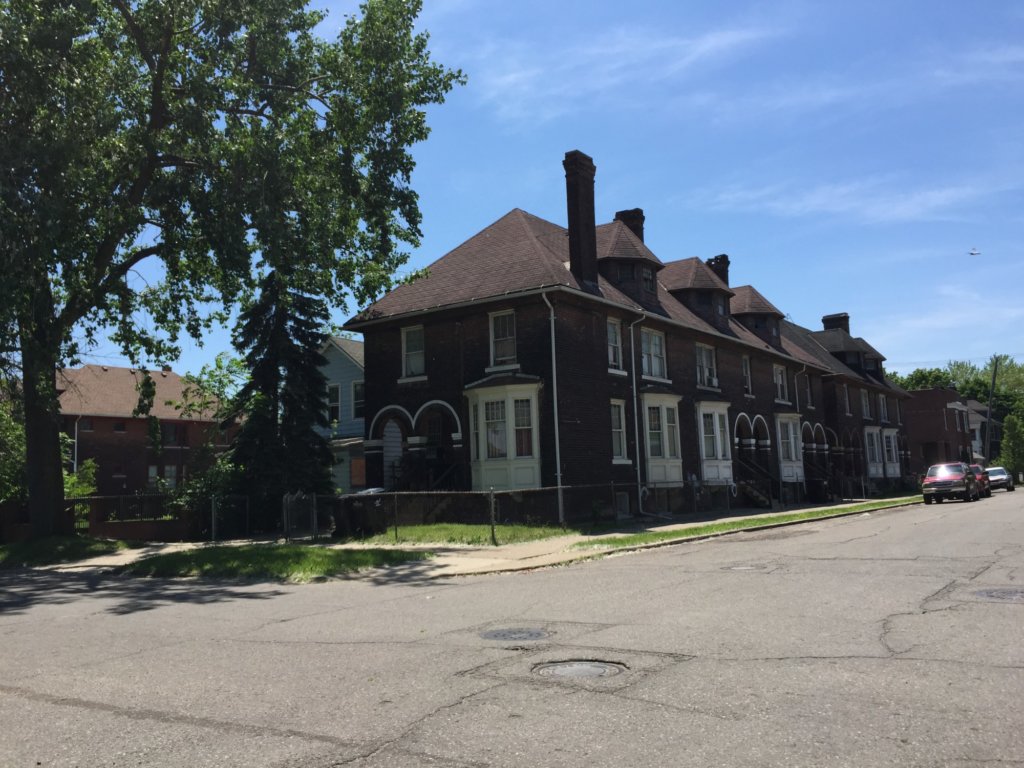
Frontage Design
As I looked back at the photographs I took on this Detroit tour, one thing that really stood out was how gracefully these buildings meet the ground. This is what we often call frontage design, and what Victor Dover describes as “the design of the buildings from the knees down,” which is so important to the quality of the built environment. In addition to being completely different scale, new residential infill buildings almost always seem get this aspect of the design wrong. It seems to be a design skill most architects have forgotten about and conventional zoning does not recognize as an important element to regulate. This is why it is a critical aspect of Form-Based Codes.
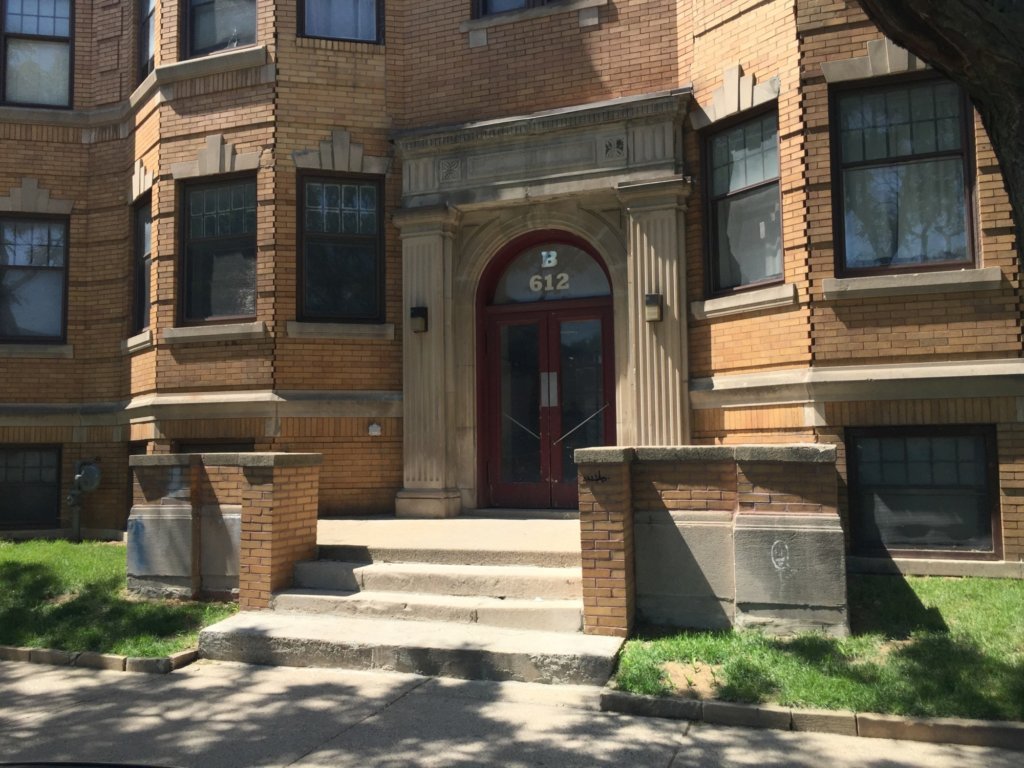
Finally, being a committed bike commuter and a fan of well-crafted bicycles, I had to stop as the Shinola Bike Shop in Midtown to test drive a couple of their 100% Made-in America bikes — what a pleasure! As with my exploration of most urban places, the richness, diversity, and sometimes quirkiness of Detroit’s neighborhoods left me thinking about my next visit, anxious to learn more about its pattern, evolution, and the role of Missing Middle Housing. And maybe next time I will come home with an amazing new bicycle.
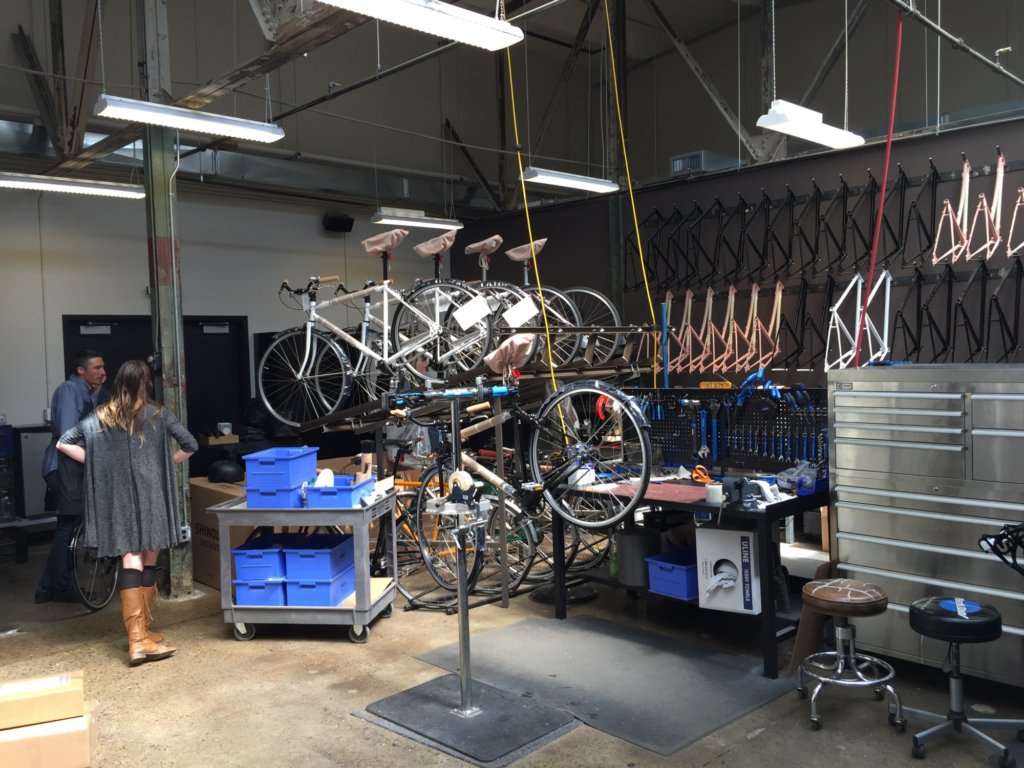
You can hear Dan Parolek present on Missing Middle Housing in the keynote he is giving at the Michigan Association of Planning’s Annual Conference in Detroit, Thursday October 8, from 11:30-1:15pm at the Detroit Marriott.